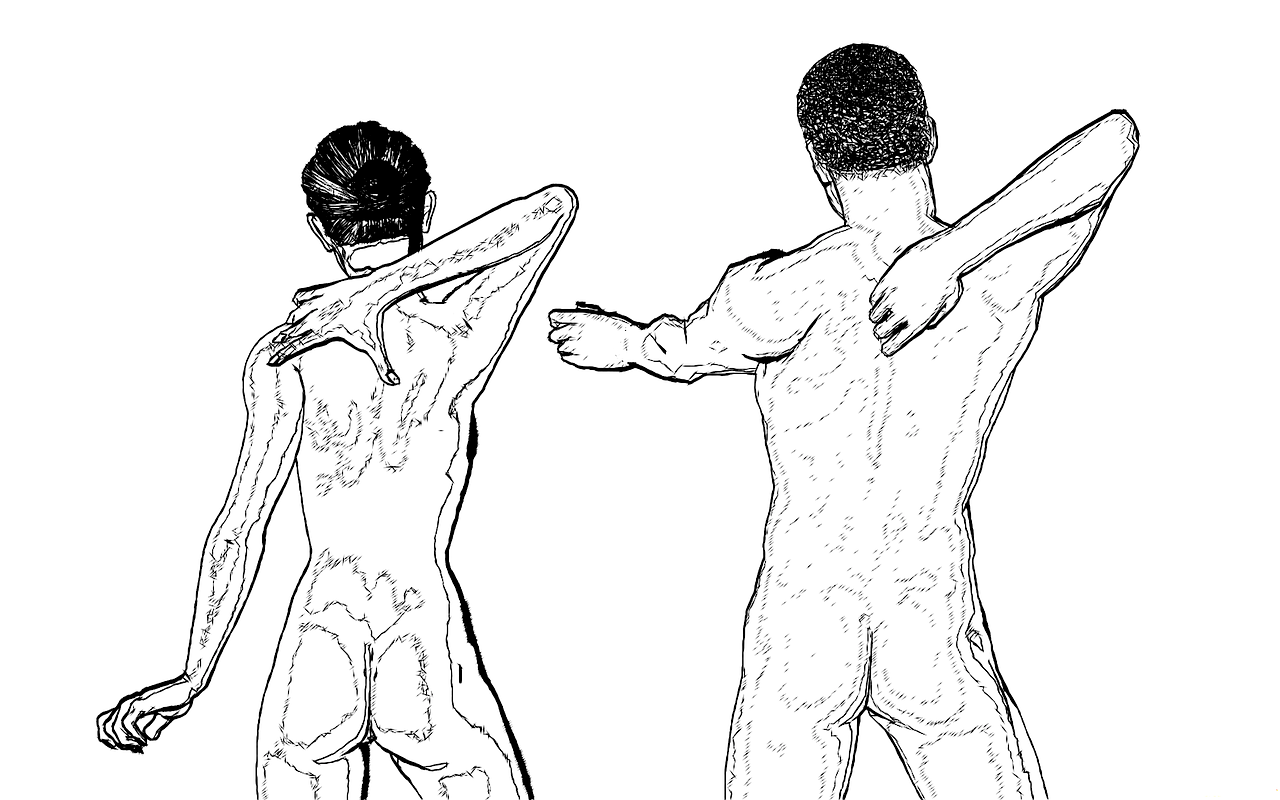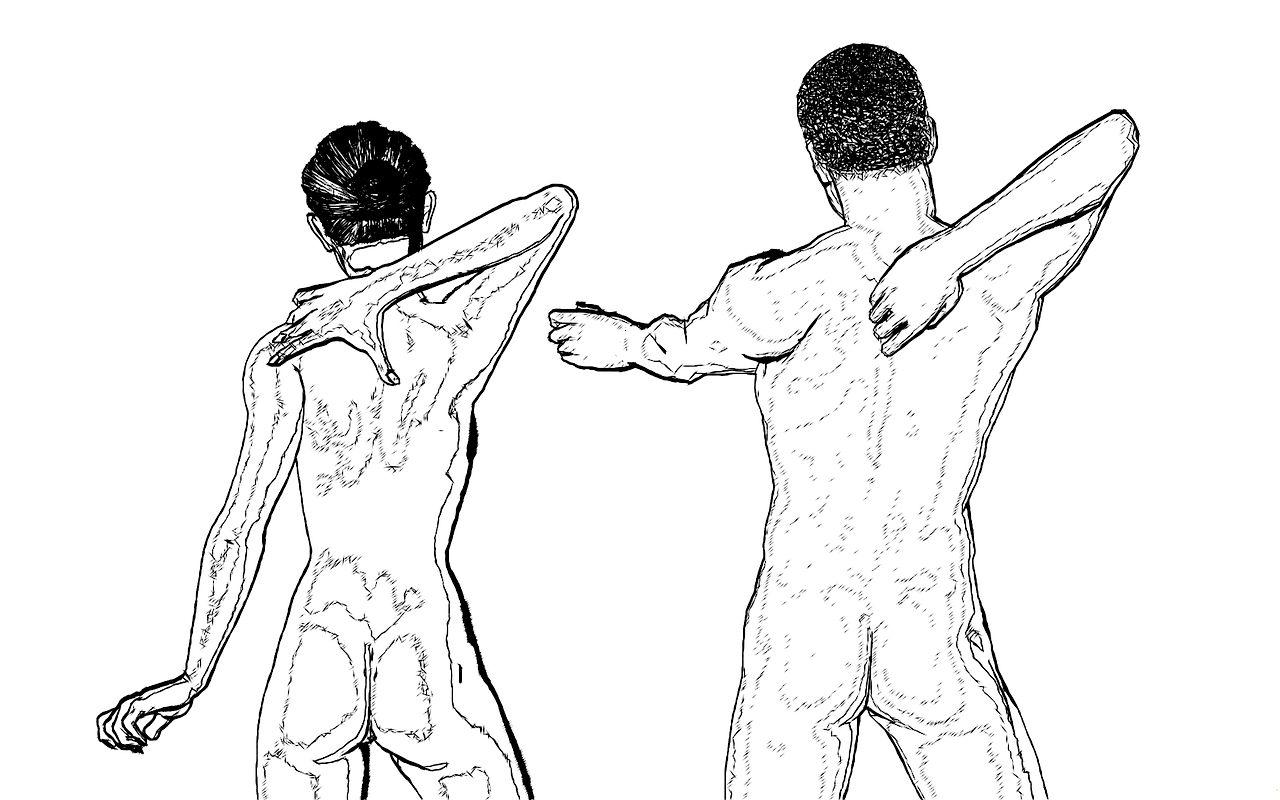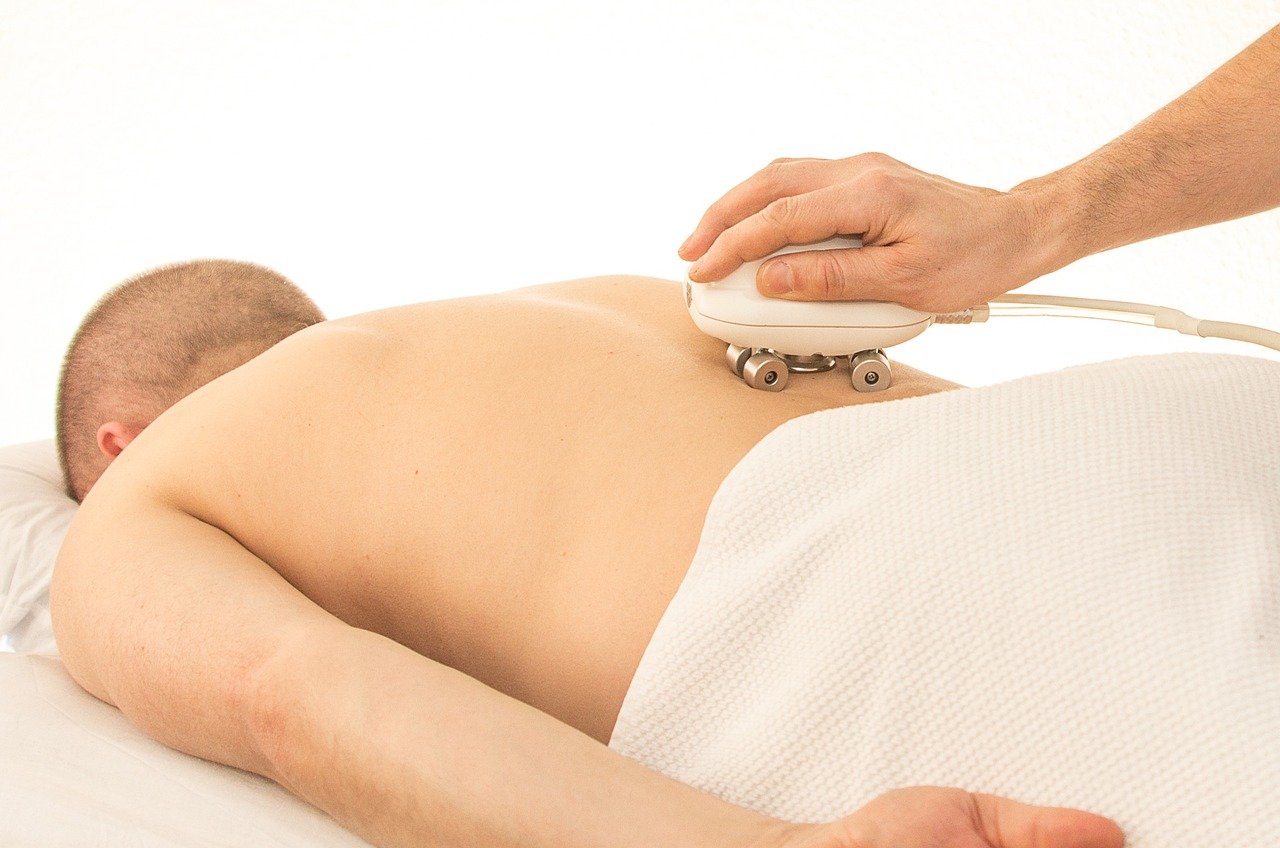
Are you one of those people who experience shoulder pain when lying on your back? If so, you’re not alone. Many individuals struggle with this discomfort, and it can significantly impact their sleep quality and overall comfort. In this article, we will explore some of the common causes of shoulder pain while lying on your back and provide helpful insights and tips on how to alleviate this issue. So, if you’re tired of waking up with aching shoulders, keep reading to discover the possible culprits behind this discomfort and the steps you can take to find relief.
Rotator Cuff Injuries

Tendinitis
Tendinitis occurs when the tendons in the rotator cuff become inflamed or irritated. This can be caused by overuse, repetitive motions, or aging. If you frequently engage in activities that require repetitive arm movements, such as lifting weights or playing sports like tennis or baseball, you may be at a higher risk for developing tendinitis in your rotator cuff. The symptoms of tendinitis in the rotator cuff may include pain and tenderness in the shoulder, weakness, and limited range of motion.
Bursitis
Bursitis is another common rotator cuff injury that can cause shoulder pain when lying on your back. Bursae are small fluid-filled sacs located around the joints that help reduce friction between tendons and bones. When the bursae in the rotator cuff become inflamed or irritated, it can lead to bursitis. This condition is often caused by repetitive motions, such as excessive overhead lifting or throwing, which can irritate the bursae. The symptoms of bursitis in the rotator cuff may include pain, swelling, warmth, and a limited range of motion in the shoulder.
Rotator Cuff Tears
Rotator cuff tears can occur as a result of acute trauma or over time due to degeneration. Traumatic tears may happen during a fall, while lifting something heavy, or during a sports injury. Degenerative tears, on the other hand, are often the result of wear and tear that happens naturally over time. Older individuals are more prone to degenerative tears. The symptoms of a rotator cuff tear may include a sudden onset of pain, weakness, difficulty lifting or rotating the arm, and a popping or clicking sensation in the shoulder.
Frozen Shoulder (Adhesive Capsulitis)
Symptoms
Frozen shoulder, also known as adhesive capsulitis, is a condition characterized by pain, stiffness, and a limited range of motion in the shoulder joint. The symptoms of frozen shoulder typically develop slowly, and the condition often progresses through three phases: freezing, frozen, and thawing. In the freezing phase, you may experience increasing pain and difficulty moving your shoulder. During the frozen phase, your shoulder becomes significantly stiff, and the pain may decrease. In the thawing phase, you may gradually regain your shoulder’s range of motion, although this process can take several months to years.
Causes
The exact cause of frozen shoulder is unknown, but certain factors may increase your risk of developing the condition. These include age (most common in individuals between the ages of 40 and 60), gender (more common in women), certain medical conditions (such as diabetes or thyroid disorders), previous shoulder injury or surgery, and prolonged immobilization of the shoulder.
Diagnosis
To diagnose frozen shoulder, your doctor will likely perform a physical examination of your shoulder and may order imaging tests, such as X-rays or MRI, to rule out other conditions. They may also perform specific tests to assess your shoulder’s range of motion and evaluate the severity of the stiffness.
Treatment
Treatment for frozen shoulder typically focuses on relieving pain and improving the shoulder’s range of motion. This can be achieved through a combination of pain medications, physical therapy, and in some cases, corticosteroid injections. In severe cases, where conservative treatments do not provide relief, surgery may be considered to release the tight capsule surrounding the shoulder joint.
Shoulder Impingement Syndrome
Definition
Shoulder impingement syndrome occurs when there is compression or inflammation of the tendons or bursa in the shoulder joint. This usually happens when the space between the top of the upper arm bone (humerus) and the tip of the shoulder blade (acromion) is reduced, resulting in friction and irritation.
Causes
Common causes of shoulder impingement syndrome include repetitive overhead motions, such as throwing, painting, or lifting objects above your head. Poor posture, muscle imbalances, and structural abnormalities in the shoulder joint can also contribute to impingement.
Symptoms
The symptoms of shoulder impingement syndrome may include pain, weakness, and limited range of motion in the shoulder. You may experience pain when lifting your arm overhead, reaching behind your back, or during activities that require repetitive shoulder movements.
Treatment Options
Treatment for shoulder impingement syndrome usually involves a combination of rest, physical therapy exercises to strengthen the muscles around the shoulder, and anti-inflammatory medication to reduce pain and inflammation. In some cases, corticosteroid injections may be recommended to further reduce inflammation. If conservative treatments do not provide relief, surgery may be considered to create more space for the tendons and bursa in the shoulder joint.
Shoulder Dislocation
Anterior Dislocation
Anterior shoulder dislocation occurs when the upper arm bone (humerus) slips out of its socket in the shoulder joint and moves to the front of the body. This can be caused by a direct blow to the shoulder, a fall on an outstretched arm, or sudden twisting of the arm.
Posterior Dislocation
Posterior shoulder dislocation is less common than anterior dislocation and occurs when the upper arm bone is forced out of its socket and moves towards the back of the body. This type of dislocation is often caused by trauma, such as a fall or a forceful blow to the front of the shoulder.
Symptoms
The symptoms of a shoulder dislocation may include severe pain, swelling, visible deformity, inability to move the arm, and a feeling of the shoulder being “out of place.”
Treatment
Treatment for a shoulder dislocation typically involves the relocation of the joint, either through manual manipulation by a healthcare professional or under anesthesia in the operating room. Following the relocation, the shoulder may be immobilized in a sling, and physical therapy exercises will be recommended to restore strength and range of motion. In some cases, surgery may be necessary to repair damaged structures or prevent recurrent dislocations.
Shoulder Instability
Causes
Shoulder instability occurs when the structures that support the shoulder joint, such as tendons, ligaments, or the labrum, become damaged or stretched, leading to the shoulder joint’s excessive movement or dislocation. This can be caused by trauma, repetitive overhead motions, or certain medical conditions that affect the connective tissues.

Symptoms
The symptoms of shoulder instability may include a feeling of shoulder looseness or slipping out of place, pain during movement, weakness, and a limited range of motion. You may also experience episodes of shoulder dislocation or subluxation, where the shoulder partially comes out of its socket.
Diagnosis
To diagnose shoulder instability, your doctor will likely conduct a physical examination of your shoulder, assess your medical history, and order imaging tests, such as X-rays or MRI, to evaluate the structures within the shoulder joint and rule out other conditions.
Treatment Options
Treatment for shoulder instability typically involves a combination of conservative measures and, in some cases, surgical intervention. Conservative treatment options may include rest, physical therapy exercises to strengthen the muscles around the shoulder, and the use of supportive braces or slings. If conservative treatment fails to provide relief or severe instability is present, surgical procedures may be performed to repair or reconstruct the damaged structures, stabilize the shoulder joint, and reduce the risk of recurrent instability.
Cervical Radiculopathy
Definition
Cervical radiculopathy refers to the compression or irritation of the nerve roots in the neck, which can result in pain, numbness, or weakness that radiates down the shoulder and arm. This condition is often caused by a herniated disc, spinal stenosis, or degenerative changes in the cervical spine.
Causes
Cervical radiculopathy can be caused by various factors, including age-related wear and tear of the spinal discs, disc herniation, bone spurs, or spinal injuries. Poor posture, repetitive neck movements, and certain medical conditions, such as arthritis, can also contribute to the development of cervical radiculopathy.
Symptoms
The symptoms of cervical radiculopathy may include neck pain, shoulder pain, numbness or tingling in the arm or hand, weakness, and difficulty with fine motor movements in the hand.
Treatment
Treatment options for cervical radiculopathy will depend on the underlying cause and severity of symptoms. These may include rest, physical therapy exercises to improve posture and strengthen the cervical spine muscles, pain medications, and in some cases, corticosteroid injections or surgery to relieve pressure on the nerve roots and alleviate symptoms.
Shoulder Osteoarthritis
Definition
Shoulder osteoarthritis refers to the progressive wearing down of the cartilage in the shoulder joint, leading to pain, stiffness, and reduced range of motion. This condition is typically seen in older adults but can also occur as a result of previous shoulder injuries or repetitive overhead motions.

Causes
The exact cause of shoulder osteoarthritis is often unclear, but it can be attributed to a combination of factors, including age-related degeneration, previous shoulder injuries or trauma, joint overuse, and certain medical conditions, such as rheumatoid arthritis.
Symptoms
The symptoms of shoulder osteoarthritis may include pain, stiffness, swelling, a grinding sensation in the joint, limited range of motion, and muscle weakness around the shoulder.
Treatment Options
Treatment for shoulder osteoarthritis usually involves a combination of non-surgical approaches to manage pain and improve shoulder function. These may include physical therapy exercises to strengthen the surrounding muscles and improve range of motion, pain medications, corticosteroid injections, and lifestyle modifications. In severe cases, when conservative treatments do not provide relief, shoulder replacement surgery may be considered to replace the damaged joint with an artificial implant.
Labral Tear
Definition
A labral tear refers to a tear or injury in the labrum, which is a ring of cartilage that surrounds the shoulder socket (glenoid) and helps stabilize the joint. Labral tears can occur as a result of acute trauma or repetitive motion, such as repetitive overhead activity or forceful throwing motions.
Causes
Labral tears can be caused by various factors, including sports injuries, falls on an outstretched arm, repetitive shoulder movements, dislocations or subluxations, and degenerative changes in the shoulder joint. Certain sports that involve repetitive overhead motions, such as baseball, tennis, or swimming, can also increase the risk of labral tears.
Symptoms
The symptoms of a labral tear may include pain, a catching or locking sensation in the shoulder, a feeling of instability, decreased range of motion, and weakness. You may also experience a popping or grinding sensation with certain movements.
Treatment Options
Treatment for a labral tear will depend on the severity of the tear and the individual’s symptoms. Conservative treatment options may include rest, physical therapy exercises to strengthen the surrounding muscles and improve stability, pain medications, and corticosteroid injections. In some cases, arthroscopic surgery may be necessary to repair or remove the torn labrum and restore shoulder function.
Shoulder Tendinitis
Definition
Shoulder tendinitis, also known as rotator cuff tendinitis, refers to the inflammation or irritation of the tendons in the rotator cuff. This condition is typically caused by repetitive overhead motions or overuse of the shoulder joint.
Causes
Common causes of shoulder tendinitis include repetitive activities or sports that involve overhead movements, such as pitching, swimming, or painting. Aging, poor posture, and muscle imbalances can also contribute to the development of tendinitis in the rotator cuff.
Symptoms
The symptoms of shoulder tendinitis may include pain, tenderness, and swelling in the front or side of the shoulder. The pain may worsen with specific movements, such as lifting the arm overhead or reaching behind the back. You may also experience weakness and a limited range of motion in the affected shoulder.
Treatment Options
Treatment for shoulder tendinitis usually involves conservative measures to relieve pain and reduce inflammation. These may include rest, avoiding activities that aggravate the symptoms, physical therapy exercises to strengthen the surrounding muscles and improve shoulder stability, nonsteroidal anti-inflammatory drugs (NSAIDs), and corticosteroid injections. In severe cases, where conservative treatments do not provide relief, surgery may be considered to repair the damaged tendons.
Nerve Compression
Brachial Plexus Injury
A brachial plexus injury refers to the damage or compression of the nerves that control movement and sensation in the arm and shoulder. This type of injury can result from trauma, such as car accidents, sports injuries, or falls, which can stretch, tear, or compress the nerves in the brachial plexus.
Suprascapular Neuropathy
Suprascapular neuropathy is a condition characterized by the compression or damage to the suprascapular nerve, which is responsible for controlling the muscles that stabilize the shoulder joint. This can be caused by repetitive overhead activities, trauma, or direct pressure on the nerve.
Symptoms
The symptoms of nerve compression in the shoulder may vary depending on the specific nerves involved. Common symptoms may include pain, numbness or tingling, muscle weakness, and difficulty with certain movements or fine motor skills.
Treatment Options
Treatment for nerve compression in the shoulder will depend on the underlying cause and severity of symptoms. This may involve conservative measures, such as rest, physical therapy exercises to improve muscle strength and flexibility, pain medications, and corticosteroid injections to reduce inflammation. In some cases, surgical intervention may be necessary to decompress or repair the compressed nerves and relieve symptoms.
In conclusion, shoulder pain when lying on your back can be caused by various conditions and injuries, including rotator cuff injuries, frozen shoulder, shoulder impingement syndrome, shoulder dislocation, shoulder instability, cervical radiculopathy, shoulder osteoarthritis, labral tear, shoulder tendinitis, and nerve compression. It is important to seek medical attention if you experience persistent or worsening shoulder pain, as proper diagnosis and treatment can help alleviate your symptoms and improve your shoulder function. Remember to consult with a healthcare professional for an accurate diagnosis and personalized treatment plan.





